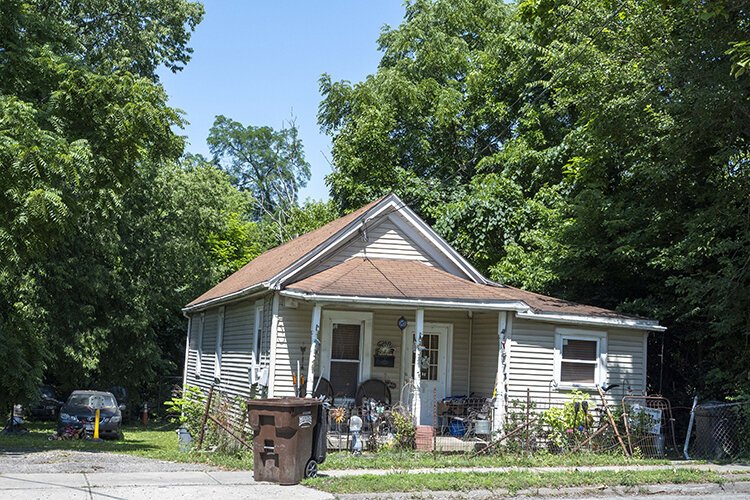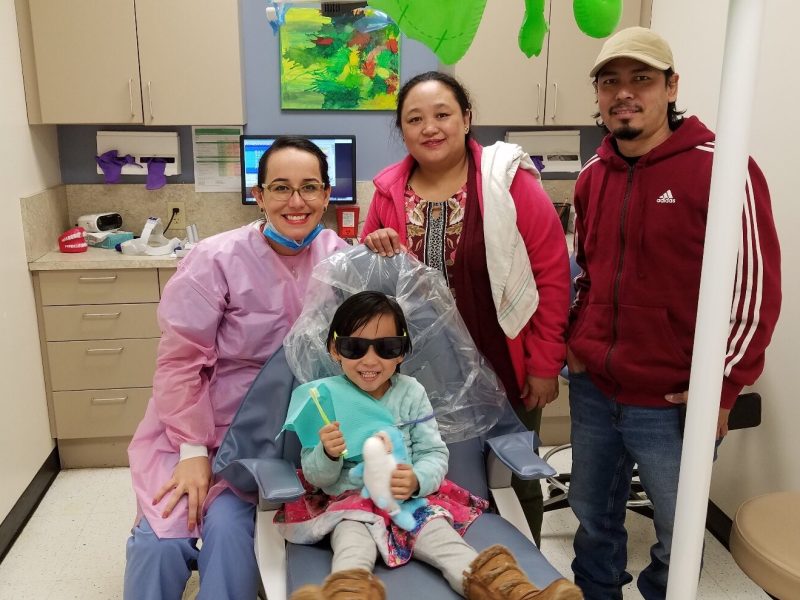There’s new funding for affordable housing. Will it reach the first-ring suburbs?
The affordable housing shortage is often thought of as a big-city problem, but first-ring suburbs also need investment to improve aging housing stock and encourage ownership.
Thirteen miles west of downtown Cincinnati, on U.S. 50, sits the village of Addyston, population 900, give or take. Situated along less than a mile of the Ohio River shore, the village has been a home to the working class ever since at least the late 19th century, when Matthew Addy, freshly arrived from Canada, established a steel pipe foundry there on the river’s north bank. Workers labored at Addy’s factory for decades, but it closed in the ‘50s. It was replaced by a sprawling chemical manufacturing complex still known by some as the Monsanto plant, even though it was purchased by a London-based conglomerate in 2007.
As most of the 25,000 vehicles that fly past on the U.S. highway every day do, it’s easy to bypass the village without giving it much thought. But Addyston has quiet parks, immaculately maintained ballfields, a post office, easy access to downtown, and, as you drive up out of the floodplain, lovely views of the Ohio River and the Kentucky hills beyond. What it needs is more people. And those people would need decent, affordable places to live.

The affordable housing shortage in Hamilton County has been well-reported. The demand has far outstripped the supply of apartments, condos, and single-family homes that a wage earner of moderate means can afford. While the housing deficit is often thought of as city phenomenon, some of the county’s first-ring suburbs also need investment to improve what is, in many communities, an aging housing stock, and to encourage home ownership among working families who earn more than the poverty level but not enough to comfortably afford to buy a home. The problem has only been aggravated by the steep increases in home values in the last three years.
“There’s definitely a need all around the county for us to increase affordability for many of our neighbors,” says Kristen Baker, executive director of the Cincinnati office of Local Initiatives Support Corp. (LISC).
In Addyston, where the age of the houses ranges from 50 to 150 years old, the need is evident. “We are in need of every type of housing that is available,” says Dan Pillow. He’s a longtime Addyston resident who has served as mayor and village council member for more than 20 years. More than 15 years ago, a major homebuilder in the region planned to construct single-family residences with river views there on vacant acreage known as the Golsh property. The housing crisis of 2008 put an end to those plans, and the property is still fallow.
Up the hill on Sekitan Avenue, more than a hundred houses once lined the street, some of them with river views. Today, many have been torn down, others have fallen into disrepair. There’s opportunities for infill housing there, but it will need subsidizing, as developers say building affordable housing doesn’t provide them with enough margin to make it worth their efforts.
“The bottom line comes down to dollars,” Pillow says. “You can have all the ideas in the world, but if there’s not an influx of dollars to do the brick and mortar, you find yourself still on the outside looking in.”
The dollars are starting to become available. Hamilton County just made what its leaders say is the largest investment to date in affordable housing — $14 million will be awarded to 17 projects expected to create 552 units of housing in two dozen neighborhoods.
It’s the first wave of what the county says will be $31.8 million in housing subsidies made possible by the American Rescue Plan, the $1.9 trillion economic stimulus bill passed by Congress and signed into law in 2021.
Most of the first set of awards were made to projects within the city of Cincinnati, but the county’s first-ring suburbs will see some help. A project in Delhi Township called Pedretti Place will receive a $1.6 million award. That will help defray an estimated total cost of $15 million to build 48 affordable, senior-friendly apartments there.
Most of the other projects outside of Cincinnati are rehabs of single-family homes owned by The Port. In 2021, the nonprofit financing agency purchased 194 houses from a Los Angeles-based corporate landlord that had filed for bankruptcy. Many of the homes are in need of costly repairs and renovations, and Port officials have embarked on a project to fix them up and eventually sell them to the tenants, usually low- and moderate-income earners.
READ MORE: City of Hope: A new mission to expand home ownership in urban neighborhoods
The county awarded $870,000 to an initial phase of The Port’s project, which will assist in the rehab of 29 of the homes, a project estimated to cost a total of $5.7 million. Some of the homes are in the first-ring communities of Springfield Township, Reading, Mt. Healthy, Lockland, Cheviot, and Colerain Township.
In Springfield Township, 15 homes will either be renovated through The Port’s effort or built new through a Habitat for Humanity project that also received county funding. Eight of them are in the township’s West College Hill community.
Despite its name, West College Hill is not part of the city Cincinnati, or its neighboring community, North College Hill. Annexations over the decades have left it as part of Springfield Township, even though it is not contiguous with the rest of that jurisdiction. West College Hill is better known as “Steele Sub,” nicknamed after Charles Steele, the real estate investor who created the subdivision in the early 20th century, and it’s believed to be the first Black subdivision in Hamilton County.

In the early 1900s, many of the homes were built without proper permitting or utility infrastructure, and on lots only 25 feet wide, explains Kathleen Kennedy, the township’s assistant administrator. The funding, she says, will help to update a neighborhood that has experienced many challenges over the years.
All the projects that received awards were, to use a term that has come into the popular lexicon, shovel-ready. In this case, “shovel ready” meant that this layer of public financing was the last hurdle to overcome to get construction started, says Luke Blocher, general counsel for the Cincinnati Development Fund, which is administering the awards.
“There are many milestones in affordable housing,” Blocher says. “This had to be the last one.”
As an example, he points to a project in the Cincinnati neighborhood of Northside called Vandalia Point. The project – 52 affordable apartments in the heart of the community — had already secured other financing, including tax credits and loans. Architectural drawings had been completed, but the project had stalled due to inflationary construction costs. It will be awarded $2.7 million in county funding to help get ground broken.
“We knew there were a lot of projects that were just stuck because of cost escalation,” Blocher said.
Most of the projects awarded funding are in the city of Cincinnati because that is where most of the work has already been done to find developers, approve designs, assemble the financing, and gain community support, making them “shovel ready,” Blocher says.
The awards in the first suburbs, although relatively small, will help foster home ownership. “It’s improving housing stock and creating home ownership opportunities for people who are renting,” he says.
Hamilton County commissioners say they are committed to expanding affordable housing in communities around the county. “This is just the beginning,” Commissioner Alicia Reece said when the awards were announced. Commissioner Stephanie Summerow Dumas called the $14 million in awards “just the first phase of a multimillion-dollar project that will re-energize affordable housing in Hamilton County.”
“The county commissioners are intent on making these opportunities available in the first suburbs,” Blocher says.
But for many first-suburb communities, the complicated work of initiating projects, assembling property, negotiating with developers, and putting together financing takes expertise and resources they often lack. “The challenge for many is they don’t have someone who is full-time focused on housing or have community partners who can assist,” says LISC’s Baker.
LISC encourages community leaders to develop partnerships with nonprofit agencies and other organizations that operate in the housing arena and begin to assemble parcels of land that could be marketed to developers. “Developers aren’t just going to show up,” she says. For example, the Delhi Township project is being co-developed by Episcopal Retirement Services, a nonprofit organization that owns or manages dozens of affordable senior-living communities throughout Greater Cincinnati.
Some communities are more focused on encouraging commercial and retail development rather than housing. But Baker notes that those businesses will need workers and customers to support them, which fresh housing can bring.
And the pursuit of affordable housing may suffer from a misperception among the general public. “People have to understand what affordable housing is,” Pillow says. “Affordable housing is not low-income housing.”
Indeed, most of the projects announced by the county will be available to people
earning 65% or less of the area median income. For a single individual, that equates to an income of $43,477 or less. For a family of four, the cutoff is $62,110.
For tiny Addyston, attracting working families is “the core of what we need to be a growing, thriving community,” Pillow says. “Addyston is like a classic old car,” he says. “It’s a great old car, but it needs a little paint. The interior might be a little shabby, but with a little love and tenderness, you’ll have a great, beautiful community.”
County officials say more projects will be announced later this year. Applications are still being accepted on a rolling basis at this link.
The First Suburbs—Beyond Borders series is made possible with support from a coalition of stakeholders including Mercy Health, a Catholic health care ministry serving Ohio and Kentucky; the Murray & Agnes Seasongood Good Government Foundation – The Seasongood Foundation is devoted to the cause of good local government; LISC Greater Cincinnati – LISC Greater Cincinnati supports resident-led, community-based development organizations transform communities and neighborhoods; Hamilton County Planning Partnership; plus First Suburbs Consortium of Southwest Ohio, an association of elected and appointed officials representing older suburban communities in Hamilton County, Ohio.


















